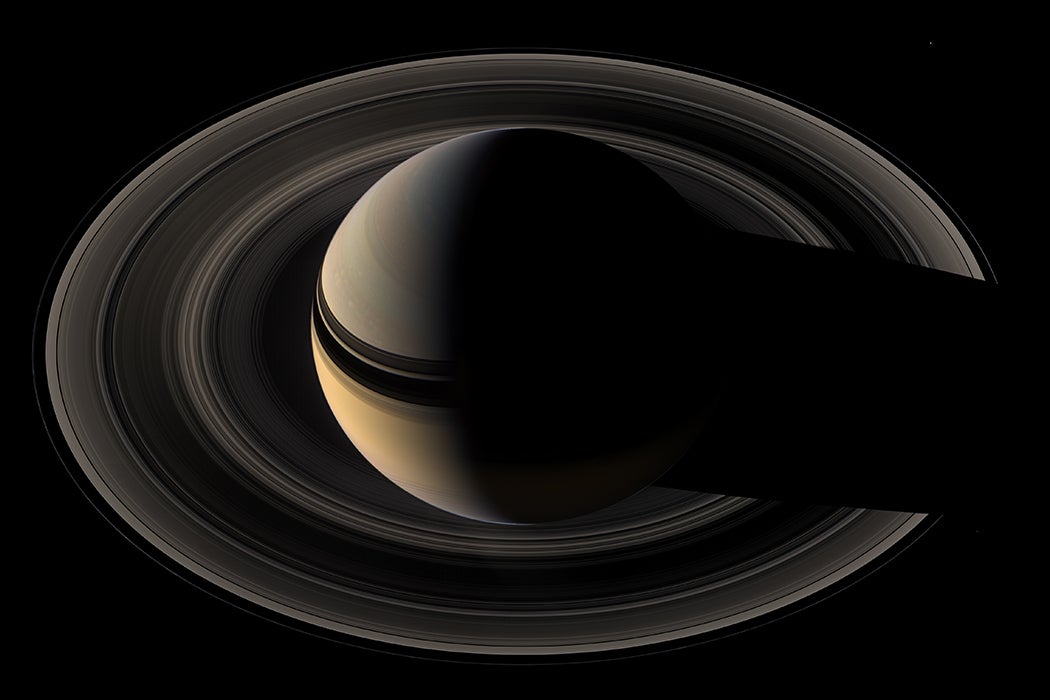In July 2004, NASA’s Cassini probe flew into orbit around Saturn. The robotic spacecraft enabled scientists to make new discoveries at Saturn and solve long-standing mysteries. But along with these answers came new questions, some of which remain unanswered twenty years later.
Before Cassini, the Pioneer and Voyager probes flew past Saturn, capturing the first close-up images. Cassini was unique, according to Carolyn Porco, the mission’s imaging director, because it became the “first artificial moon of Saturn and the farthest robotic outpost humanity had ever established around the Sun.” Three years after Cassini arrived, Porco wrote an update on the fruits of the long-term mission called “Cassini: The First One Thousand Days.” It is a glimpse into the early days of what became a thirteen-year mission.
Porco was uniquely situated to tell this story, which she describes as a “Jules Verne adventure come true.” She presents and interprets images from the spacecraft’s high-resolution cameras, weaving them into an exploration narrative.
“Cassini arrived at Saturn in its northern hemisphere’s winter,” Porco writes, and describes colors and shapes seen in Saturn’s atmosphere. In one image, she points out “a massive dragon-shaped electrical storm, with red indicating clouds deeper in the atmosphere and gray and white indicating higher ones.”
With descriptions like this, Porco gives seemingly flat images depth and texture, and conveys to a general audience what scientists were able to learn from them. She describes how this storm resolved questions about the source of electrostatic discharges detected by Voyager.
One of the Cassini team’s main goals, according to Porco, was to learn more about our origins. This meant studying the rings and moons of Saturn, because “the same processes ongoing in Saturn’s rings are believed to have occurred in the disk of material that ultimately became our solar system.”
The rings are mostly made of water ice, but Porco describes how other materials give each ring a unique color and brightness, providing clues about their origins. She also describes small “ringmoons,” which cleared gaps within the rings, and the discovery of four new moons: Methone, Pallene, Polydeuces, and Daphnis.
Weekly Newsletter
Porco highlights discoveries at two previously known moons: Titan and Enceladus. Theories that Titan’s surface might be home to lakes of liquid methane were put to the test. Cassini carried a companion robot named Huygens, built by the European Space Agency, which descended to the surface of Titan by parachute. Porco describes how Huygens showed that some dark areas were “covered with 100-meter-high dunes.” Scientists found that “the fabled open bodies of liquid” were mostly confined to the poles—a new mystery to be solved.
But to Porco, Enceladus held some of the most fascinating revelations. She presents images from the icy moon showing smooth surfaces, warm fissures covered in organic material, and jets of ice and water vapor shooting into space. To Porco, the images ignited dreams of a world “suitable for living organisms.”
“For planetary explorers,” she writes, “it doesn’t get more exciting than this.”







